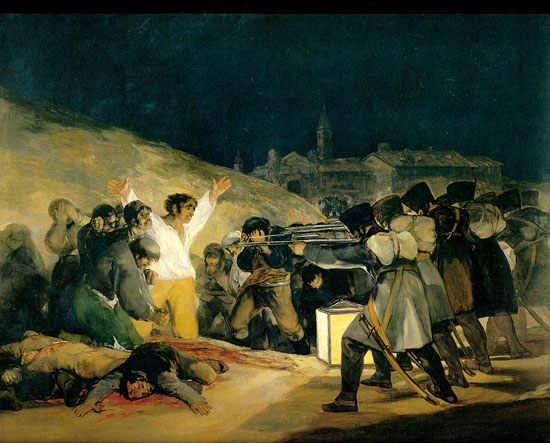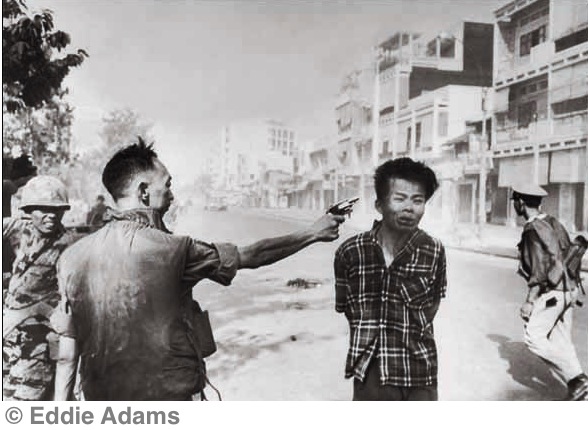The first snapshot artist.
While Spaniards may have hated Napoleon for the invasion of their nation and the destruction of the ruling Bourbon dynasty they should, in fact, have been grateful to the French dictator. By hastening the end of monarchical rule, Napoleon effectively put a simultaneous end to the power of the Catholic church in Spain and ushered in a secular constitution with representatives elected by the people, not by Rome. Poor Spain. We think nothing of damning modern religious dictatorships while conveniently forgetting the cruelest of systems which denied citizens even the basest rights. That system, of course, was the Spanish Inquisition.
Nations of all stripes continue to use similar tactics today to deny people their rights – torture and execution in the name of the state – though the excuse is now national security rather than exorcism of witches. And the actions of our rulers are no more representative of the will of the people than were those of the Bourbon kings of old.
In the thick of all of this back in the days of the Inquisition was the Spaniard Francisco Goya (1746-1828). He was lucky to have died in his bed. While he took on a number of church projects – who wouldn’t when trying to put bread on the table – he was the most secular of painters. In his powerful etchings and sketches of the horrors of war and the Inquisition he documented, as never before, the evils committed in the name of a ruling power. His anti-war work reached a peak never before scaled by Western art in his painting of French soldiers executing loyalists on May 3, 1814. This snapshot-like vision was conjured up from his imagination, as he was too old and too deaf to be traipsing about the streets of Madrid while its citizens were waging guerilla war against the French enemy,

Goya – May 3, 1814, Madrid
Modern times make it far simpler to record the horrors of armed conflict and that fact takes away much of the power of the message. We are numbed by so much of this that it no longer gets through. While the most famous picture of the Vietnam war undoubtedly speeded America’s defeat and exit, few remember it now. It is Eddie Adams’s picture of a Viet Cong having his head blown off.

Unlike Goya’s snapshot, Adams had no need of imagination. He just had to be there. There’s a newsreel of the same event so it’s not like he was the only photographer there or the only one to see this ‘photo op’ coming. And, to his lasting surprise, he helped end a war in much the same way that Goya’s snapshot put paid to the Spanish peoples’ prosecution by church, state and invader. The difference is that Goya was recording with intent whereas Adams was just another guy with a camera.
And while Adams’s picture, in its own way, is no less powerful than Goya’s, I need not ask which you would rather have hanging on your wall.